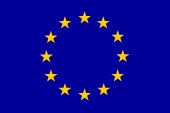The future of energy in Med countries: It is a marathon, not a sprint - by Dr. Nestor Fylaktos.
It’s quite well known by now that there are two main themes of the relationship between energy and everyday life. The first affected many people since the beginning of the industrial revolution, but only started becoming a prominent issue in the 50s, after the terrible smog that was regularly blanketing London. It’s of course the environment - energy duality.
The second rushed into people’s lives in the 70s during the two world oil crises. It was then that the price of oil worldwide skyrocketed due to the Iranian embargo and made people realize that the utility energy carries has a cost. Or rather a price. And as it gradually became essential in our contemporary lifestyle, cheap energy (in any of its final forms) became crucial.
Those two themes now coexist. Sometimes happily, sometimes not. Fuel availability, technology advancements and generous government backing have kept fossil fuel (and nuclear, to an extent) prices down and within reach of businesses and individuals. Who would want more expensive energy? But local pollution and - most importantly - climate change have ushered the collective need for protection of the environment, ourselves and future generations from harm. Scientists and policy makers have gone in great lengths to tackle those problem individually or at once. Nonetheless the vision remains universal: Clean, affordable energy for everyone.
Solving this problem however is no trivial matter. Various countries have taken different steps in dealing with energy issues, ranging from export-oriented oil-rich OPEC countries, to large consumers such as the US and China, to geopolitics-minded Russia, even to nuclear powered France. The Med region has naturally its own unique climatic characteristics, but it does not exhibit a uniform demand or infrastructural profile. The region comprises of dynamic but unstable Northern African countries, recession-hit southern Europeans and the resource-hungry middle East. Is there a uniform solution for everyone? No, certainly not. But they all share the same vision.
This vision invariably treads through the three themes highlighted by the recent energy group discussion during the Med-Spring meeting in Lisbon: Energy efficiency, renewable energy and system integration. These are interlinked and championing one over the other will lead to incomplete solutions destined to to become a half-measure, or worse, a failure. But they require large investments, huge efforts, organisation and patience. For example energy efficiency would require the amendment of building regulations, the advancement of energy saving technologies and behavioural shifts of the local population, which is projected to increase substantially in the next 30-40 years. But energy efficiency alone will only dampen the trajectory of future energy consumption - it has the theoretical potential to reverse it, but history has shown that this is not the case.
Renewables on the other hand can benefit from the abundant sunlight the region receives. This is a major advantage over Northerner countries that rely mostly on wind for their RES penetration. Sunlight in the Med region gives PV and CSP systems the right ingredients to succeed not only in isolated and confined markets, but to have a meaningful contribution to a country’s electricity production, displacing traditional fossil-fuel powered generation. The prices of PV modules and system installation have been greatly reduced lately allowing for very large systems being built and connected to the grid. This has pushed large swaths of renewable electricity to reach homes though the network during hours of operation. Nighttime on the other hand requires a traditional baseload generator or some sort of storage facility that would store energy produced during the day. An alternative to this would be the storage of thermal energy produced from CSP units, and systems like these make their way from the drawing board to the market - with Spain leading the way.
The third component is system integration, or putting all this to work together. And this is a major challenge, especially for countries with less mature and less dense grids, and with a future outlook that predicts steady increases in demand for years to come. The challenge here is two-fold: First make the existing infrastructure as accommodating as possible to stochastic generation, and second push for technologies that can displace base-load power in a cost-effective manner. The paradigm of Germany shows that with enough public and government support renewable penetration now is much higher that even the most optimists thought a few years ago. And the grid still works. Similar scenarios for Italy and Greece show that it’s possible to have a high percentage of PV in the energy mix, and it is something manageable. The displacement of base-load will be tougher. Right now this can be achieved only through some kind of storage (discounting hydroelectricity that has a finite potential in the region, mostly tapped) that proves to be rather costly and difficult to implement.
It’s therefore imperative that careful and concerted efforts are made to develop of all of the above. The drivers are there; the world is realizing just how serious energy use can be for the environment, and that energy is a commodity that fuels our livelihoods, and therefore cannot be out of economic reach for no one. Get those two working together and the future looks bright - but change cannot happen overnight. Our goal is far; there is no way we can sustain a sprint. We need to run a marathon: prepare well, use our minds and conserve our energy. This way that goal gets closer by the day.
Dr. Nestor Fylaktos is Post Doctoral Fellow at EEWRC (The Cyprus Institute) and one of the MED-SPRING EMEG Experts.



